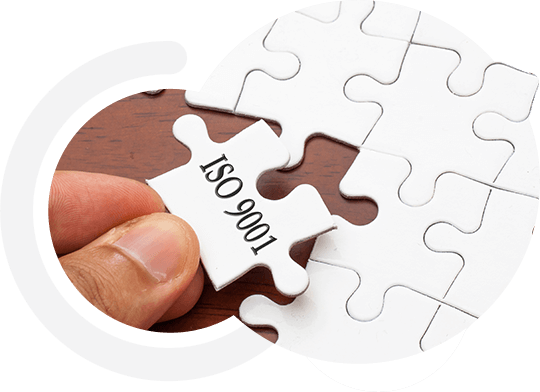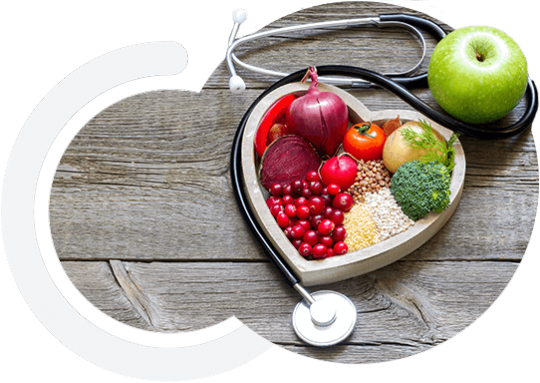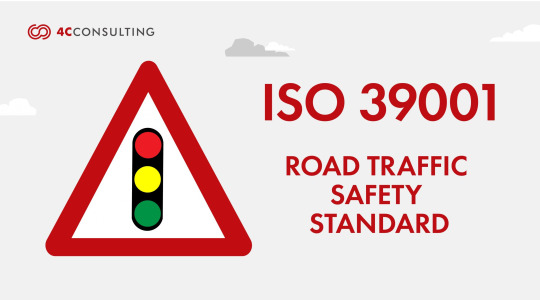Text
WHAT IS ISO 9001 CERTIFICATION?
ISO 9001 is an internationally recognized standard for Quality Management Systems (QMS). It provides a framework for businesses to establish, implement, and continuously improve their QMS to enhance customer satisfaction and achieve business objectives. Organizations that are ISO 9001 certified demonstrate their commitment to quality and compliance with global standards, which can lead to increased customer trust, improved business performance, and new business opportunities.
4C Consulting specializes in providing ISO 9001 certification consulting and training services to help organizations achieve compliance with the ISO 9001 standard. Our team of experienced consultants work closely with our clients to understand their specific needs and develop tailored solutions to address their unique challenges.

ISO 9001 TRAINING
Our team of ISO 9001 Consultants offers a customized training program on ISO 9001:2015
0 notes
Text
ISO 9001 is an internationally recognized standard for Quality Management Systems (QMS). It provides a framework for businesses to establish, implement, and continuously improve their QMS to enhance customer satisfaction and achieve business objectives.
Organizations that are ISO 9001 certified demonstrate their commitment to quality and compliance with global standards, which can lead to increased customer trust, improved business performance, and new business opportunities.
Our team of ISO 9001 Consultants offers a customized training program on ISO 9001:2015 for
0 notes
Text
#What is ISO 13485#What is a Medical Device#How Can ISO 13485 Help you#Implement ISO 13485 Standard#Implement ISO 13485#Requirements of ISO 13485#Benefits of ISO 13485
0 notes
Text
#ISO 22000 Consultants#ISO 22000 Certification#ISO 22000 Certification Consultants#ISO 22000 Training
0 notes
Text
#ISO 9001 Certification Consultants in Indore#ISO 9001 Consultant in Indore#ISO 9001 Training Provider in Indore
0 notes
Text
#ISO 9001 certification consulting#ISO 9001 certification#ISO 9001 consulting#ISO 9001 Consultants#ISO 9001 Training#ISO 9001 Awareness Training#ISO 9001 Internal Auditor Training
0 notes
Text
WHAT IS LEAN SIX SIGMA?
Lean Six Sigma is a process improvement strategy which gain popularity at Toyota. The Lean manufacturing process gained popularity during the industrial revolution, which focuses on enhancing manufacturing and transaction processes to give customers better value.
Six Sigma is a quantitative method to process improvement that reduces errors and process variance while speeding up execution. It was developed in the 1980s to increase execution speed and quality by lowering process flaws and mistakes. Lean Six Sigma is a mix of the two process improvement methodologies to standardize processes, eliminate waste, and reduce errors. This hybrid approach increases process execution speeds and the value provided to customers.
1 note
·
View note
Text
#ISO 27001 TRAINING#ISO 27001 Consultants#ISO 27001 Consultant#ISO 27001 Certification Consultants#ISO 27001 Certification#ISO 27001 Awareness Training#ISO 27001 Internal auditor Training
1 note
·
View note
Text
ISO 39001 ROAD TRAFFIC SAFETY MANAGEMENT SYSTEM
Road Traffic Safety (RTS) is considered as a global issue, as the number of accidents that occur worldwide is constantly rising. It takes a lot for organizations to reduce and eventually eliminate accidents, deaths and severe injuries associated with road traffic crashes.
According to the World Health Organisation
Injuries related to road traffic accidents are the eighth leading cause of death globally.
Additionally estimated 1.3+ million traffic-related deaths happen every year.
The ISO 39001:2012 standard outlines the requirements for a Road Traffic Safety management system (RTS). This standard helps organisations to establish road traffic systems to reduce serious injuries and death caused by road traffic accidents. It Aids to proactively manage RTS risks, save lives, reduce lost productivity and demonstrate your commitment to both safety and social responsibility.

PDCA FRAME WORK
Plan- Identifying the impact the organization can have on RTS, mapping its impact on interested parties, and determining the organizational scope of an RTS management system with identified needs throughout the planning. This phase also includes Establishing, documenting and communicating the formed RTS policy, assigning organizational roles, responsibilities and authorities
Do- For ensuring that the RTS objectives & RTS targets are met – implementing & operating the RTS management system and also making sure that all the action plans are carried out.
Check- Monitoring and evaluating RTS performance through internal audits and periodic reviews of the RTS management system. Also identifying opportunities for the continuous improvement and ensuring the RTS results are achieved.
Act- Maintain and improve the RTS performance by taking corrective action, based on the deficiencies & non conformities. Review and reappraising the scope of the RTS ,RTS policy and objectives aimed at reducing risk of death & serious injuries in road traffic crashes.
ISO 39001 TRAINING
Our team of ISO 39001 Internal auditor Training Consultants offers a customized training program on ISO 39001:2015 for
1 note
·
View note
Text
Top CE Certification Consultants & CE Implementation Service Provider
CE— a French word— stands for Conformity European. It is one the important conformity marketing for regulating the goods sold within EEA—European Economic Area.
If the CE Mark exists on a product, then it assures that the product has met the specification mentioned by the corresponding European Standards. CE Consultant Mark Compliance is legal requirement imposed by the European Union Member States and European Economic Area Countries.
The countries that fall in this line are: Austria, Belgium, Bulgaria, Cyprus, Czech Republic, Denmark, Estonia, Finland, France, Germany, Greece, Hungary, Iceland, Ireland, Italy, Latvia, Lichtenstein, Lithuania, Luxemburg, Malta, Norway, Poland, Portugal, Romania, Slovakia, Slovenia, Spain, Sweden, The Netherlands, and UK.
Unfortunately, there is no comprehensive list of the products that require a CE marking. Therefore, it is the manufacturer’s responsibility to determine if a product requires a CE marking.
The “New Approach Directives” are documents that contain the legislation issued by the European Commission on the requirements that need to be met and procedures that must be followed in order for a particular product to be CE marked for sales in the EU.

EMPOWER YOUR BUSINESS WITH 4C - Best CE Training Provider In India
Qualified, Experienced and Competent team working across India
Team 4C have UL certification consultants for Consulting Services having 15+ years of experience
30,000+ Man-days Consulting and 20,000+ Hours training Hands on experience of Team 4C UL certification consultants in helping the right break up of UL certification in India.
Team 4C has UL certification consultants that will help organizations with UL certification in India
Worked with more than 50 International & National Certification Bodies
#CE Certification Consultants#CE Certification#CE Consultants#CE Implementation#CE Training#CE Internal Auditor Training#CE Awareness Training
1 note
·
View note
Text
Seven new management tools - 7QC Tools
“As much as 95 per cent of all quality-related problems in the factory can be solved with seven fundamental quantitative tools.”
-Kaoru Ishikawa, The inventor of Fishbone Diagram
In today’s customer-centric market, quality is an integral factor in the growth and sustainability of any business. Businesses go the extra mile to provide the best and excellent customer experience to ensure customer satisfaction. Hence, efficient quality management which has the highest impact on customer experience is one of the most essential features for any business.
Introduced by Kaoru Ishikawa, the seven basic tools of quality also known as 7 QC tools are very effective in quality management and quality assurance process. So, businesses who want to ensure competitive and excellent quality of their products and services can utilize the proven 7QC tools for structuring a strategic plan for quality improvement.

Types of quality management tools
Cause and Effect Diagram
Cause and Effect Diagram also known as Fishbone Diagram helps in identifying the potential causes of an effect or a problem. In addition to sorting ideas in respective categories, it also helps in understanding the areas of opportunity through effective brainstorming. Fishbone training empowers you to identify the potential cause in the problem.
Control Chart
Control charts are used to study how the processes have changed over a period of time. Further, by comparing current data to historical control limits, one could lead to the conclusion about whether the process variation is consistent as in under control or unpredictable as in out of the control due to being affected by special causes of variation.
Pareto Chart
Pareto Chart is based on the 80/20 rule where it shows the significant factors that have the highest impact on the identified problem.
Check Sheet
Check sheet is a structured process which helps to collect and analyzing data. It is an effective tool that can be for a variety of purposes.
Histogram
Histogram is commonly used a graph that shows the data and its frequency of distribution to help users identify each different value in a set of data occurs.
Scatter Diagram
Scatter diagram shows the relationship between two important factors i.e. pairs of numerical data, one variable on each axis to demonstrate the relationship.
Stratification
Stratification also known as a flow chart or run chart is a technique that separates the data gathered from a variety of sources so that patterns can be seen i.e., the path an entity has taken through a defined process.
Utilizing the 7 QC tools in six sigma or quality management process helps in taking a systematic approach to identify and understand the risk, assess the risk, control fluctuation of product quality and accordingly provide solutions to avoid future defects.

WHEN SHOULD YOU USE 7 QC TOOLS?
7 QC tools can be carried out during the quality management, quality improvement process, six sigma implementation processes or even the regular PDCA cycle for the quality purpose for enhanced quality management.
In the first phase of measuring and identifying, Fishbone Diagram also known as cause and effect diagram, Pareto Chart and Control Chart can be utilized. In the next phases of assessment and analysis, Scatter Diagram, Histogram and Checklist can be carried out. The Control Chart can be utilized consistent quality improvement.
BENEFITS OF 7 QC TOOLS
The 7 QC tools are structured and fundamental instruments that help businesses improve their management and production process for achieving enhanced product quality.
From assessing and examining the production process, identification of key challenges and problems to controlling the fluctuation present in the product quality and providing solutions for prevention of defects in future, the easy to understand and implement, 7 QC tools are very effective. Some of the major business benefits of 7 QC tools are listed below.
Provides a more structured path for problem-solving and quality improvement
Easy to understand as well as implement yet extremely effective
A scientific and logical approach for problem-solving
Follows the 80/20 rule i.e. gain 80% result with 20% efforts
Improve the quality of product and services
Helps in identifying and analyzing problems during the process
Fishbone training aides in root cause analysis and problem-solving
Encourages team spirit and fosters a healthy culture
Identifies roots cause and solve it permanently
Enhance customer experience and customer satisfaction
#types of quality management tools#data quality control tools#new seven management tools#stratification quality tool pdf#7 qc tools คือ#7 new tools#seven new management tools
1 note
·
View note
Text
ISO 9001 QUALITY MANAGEMENT SYSTEM Certification
ISO 9001 is an internationally recognized standard for Quality Management Systems (QMS). It provides a framework for businesses to establish, implement, and continuously improve their QMS to enhance customer satisfaction and achieve business objectives. Organizations that are ISO 9001 certified demonstrate their commitment to quality and compliance with global standards, which can lead to increased customer trust, improved business performance, and new business opportunities.
4C Consulting specializes in providing ISO 9001 certification consulting and ISO 9001 Awareness training services to help organizations achieve compliance with the ISO 9001 standard. Our team of experienced consultants work closely with our clients to understand their specific needs and develop tailored solutions to address their unique challenges.

SCOPE & APPLICATION Of ISO 9001 Certification
For ISO 9001:2015, and organizations must demonstrate its ability to consistently supply product that meets customer requirements while meeting all applicable Statutory and regulatory requirements, and Set objectives to enhance customer satisfaction through the effective application of the system and continual improvement of the same.
THE MAJOR CLAUSES IN THE ISO 9001:2015 ARE:
HL structure and core text for all Management System Standards
Risk based thinking
Clearer understanding of the organization’s context
Increased emphasis on seeking opportunities for improvement
ISO 9001 TRAINING
Our team of ISO 9001 Consultants offers a customized training program on ISO 9001:2015 for
#ISO 9001 TRAINING#ISO 9001 Awarness training#ISO 9001 certification#ISO 9001 certification consultant#ISO 9001 Consultants
1 note
·
View note
Text
FSSC 22000 Overview
The Foundation Food Safety System Certification 22000 (FSSC 22000) offers a complete certification Scheme for the auditing and certification of Food Safety Management Systems (FSMS) or FSMS and Quality Management Systems (FSSC 22000-Quality).
The Scheme makes use of international and independent standards such as ISO 22000, ISO 9001, ISO/TS 22003 and technical specifications for sector specific Pre-Requisite Programs (PRPs), such as ISO/TS 22002-1.
Besides these standards, the Scheme contains so-called FSSC Additional Requirements which can be found in the FSSC 22000 Scheme documents. The Scheme documents are available from the FSSC 22000 website.

Through meeting the Global Food Safety Initiative (GFSI) Benchmarking Requirements, the FSSC 22000 Scheme has been given full recognition since 2010. GFSI recognition demonstrates that the Scheme meets the highest standards globally leading to international food industry acceptance. . Implementation and certification of FSSC 22000 can be integrated with other management systems for quality, environment, health & safety.
The FSSC 22000 Scheme consists of three components: ISO 22000, sector specific PRPs and additional requirements. Besides these three components there’s a FSSC 22000-Quality option based on the additional requirements of ISO 9001.
For organizations wishing to integrate their food quality management system into the scope of their certification, FSSC 22000-Quality certification is available. FSSC 22000-Quality consists of a combined FSSC 22000 and full ISO 9001 audit.
The FSSC scheme has 3 required components:
ISO 22000 provides common framework acorss the entire supply chain to manage requirements, communication internally and externally, and continually improve the system
PRPs – Sector specific pre-requisite programs( ISO / TS standards / BSI PAS)
FSSC 22000 requirements – FSSC 22000 adds specific requiremetns to ensure consistency, integrity and to provide governance and management of the scheme.
Our team of FSSC ISO 22000 consultants will provide a customized training program on FSSC 22000:2010 for
1 note
·
View note
Text
Iris Certification Overview
IRIS stands for International Railway Industry Standard, which is a globally recognized system for the evaluation of business management systems, tailored to the specific needs of the rail sector. Supported by operators, system integrators and equipment manufacturers, the IRIS Certification system is based on technical requirements of ISO/TS 22163 and conformity assessment which including assessment methodology and a common certification process. The aim of IRIS is to create a culture of quality that brings benefits to all stakeholders in the rail supply chain.

ISO/TS 22163
ISO/TS 22163 is a document published by the International Organization for Standardization, which sets out requirements for a business management system that is tailored to the specific needs of organizations in the rail sector.
It contains the requirements of the global standard for quality management systems (ISO 9001:2015) together with a series of specific requirements relevant to the rail sector. We offer a customized IRIS training program for organizations.
Scope of Iris Certification & Application
IRIS - ISO/TS 22163 defines quality management system requirements in the rail sector (RQMS), which is applicable throughout the whole supply chain of railway industrial related products for the design and development, manufacturing and maintenance activities (excluding operations and services of rail transports); providing continual improvement, emphasizing defect prevention and defect reduction in the supply chain; and enhancing the process of sustaining product quality, including safety aspects.
Companies from the entire supply chain for products related to;
Rolling-stock,
Signaling &
Infrastructure
With the activities of,
Production and/or
Development and/or
Maintenance (fleet Maintenance, refurbishment and Component overhaul and (or) repairs).
#Iris Certification#Iris Cconsultants#Iris Certification consultants#iris#IRIS training#IRIS Lead auditor training
0 notes
Text
ISO 39001 Overview
Around 1.35 million lives are cut short annually due to automobile accidents on the roads. There are an additional 20 to 50 million non-fatal injury victims, many of whom develop disabilities as a result of their injury (2018 World Health Organization). An ISO 39001:2012 compliant road traffic safety management system (RTSMS) can help enterprises that interact with the road traffic system increase safety, lower incident rates, and lower the risk of serious injury or fatality from traffic-related accidents. By having your organization RTSMS certified, you can be sure that it is operating efficiently and in accordance with your system’s goals and policies.

WHAT IS ISO 39001?
The international standard ISO 39001 establishes the framework for the Road Traffic Safety Management System (RTSMS). The danger of injuries or fatalities brought on by traffic accidents can be decreased, which can help organizations that operate with the road traffic systems. Companies that are dedicated to enhancing traffic safety will gain from implementing ISO 39001 into practice. Certification to the standard will help your organization implement your company’s road safety management system objectives and action plans within your operations.
WHY TO IMPLEMENT ISO 39001 FOR MANAGING ROAD TRAFFIC SAFETY?
Road injury prevention calls for systematic management throughout the public and commercial sectors, a clear focus on achieving results, and significant shared accountability. Organizations of all shapes and sizes can benefit from using ISO 39001 to manage road safety. Organizations implementing ISO 39001 can reap the following benefits;
Participate in efforts on a national and international level to stop the death and serious injury caused by car accidents.
Establish organizational dedication to a critical public concern.
Address one of the main occupational safety issues the organisation faces.
Reduce organizational accident and incident costs, as well as working days missed due to injuries
Targeting road safety hazards requires making the greatest use of the resources at hand.
Promote the company, raise its profile, and boost sales.
Boost your competitive edge in the tendering process.
Reduce the cost of repairs and insurance.
0 notes
Text

WHAT IS ISO 37001 CERTIFICATION?
ISO 37001 is defined as Anti-Bribery Management System. The purpose is to establish, implement, maintain and enhance an anti-bribery program that prevents, detects and addresses bribery risks in an organization or institution. 4C team has trained and experienced ISO 37001 consultants who help the organization to implement a customized anti bribery management system in line with regional anti bribery law and organization type and size.
The series of measures for ISO 37001 include: adopting an anti-bribery policy, appointing a person to oversee compliance, anti-bribery and corruption training, risk assessments and due diligence for ISO 37001 on projects and business associates, implementing financial and commercial controls, and instituting reporting and investigation procedures.
Moreover, organizations apply due diligence procedures by following a proportionate and risk-based approach for respective professionals who perform or will perform services for or on behalf of the organization. The purpose is to mitigate and confront identified bribery risks.
#ISO 37001 Awareness Training#ISO 37001 Implementation#ISO 37001 Internal Auditor Training#ISO 37001 Training#ISO 37001 Certification Consultants
0 notes